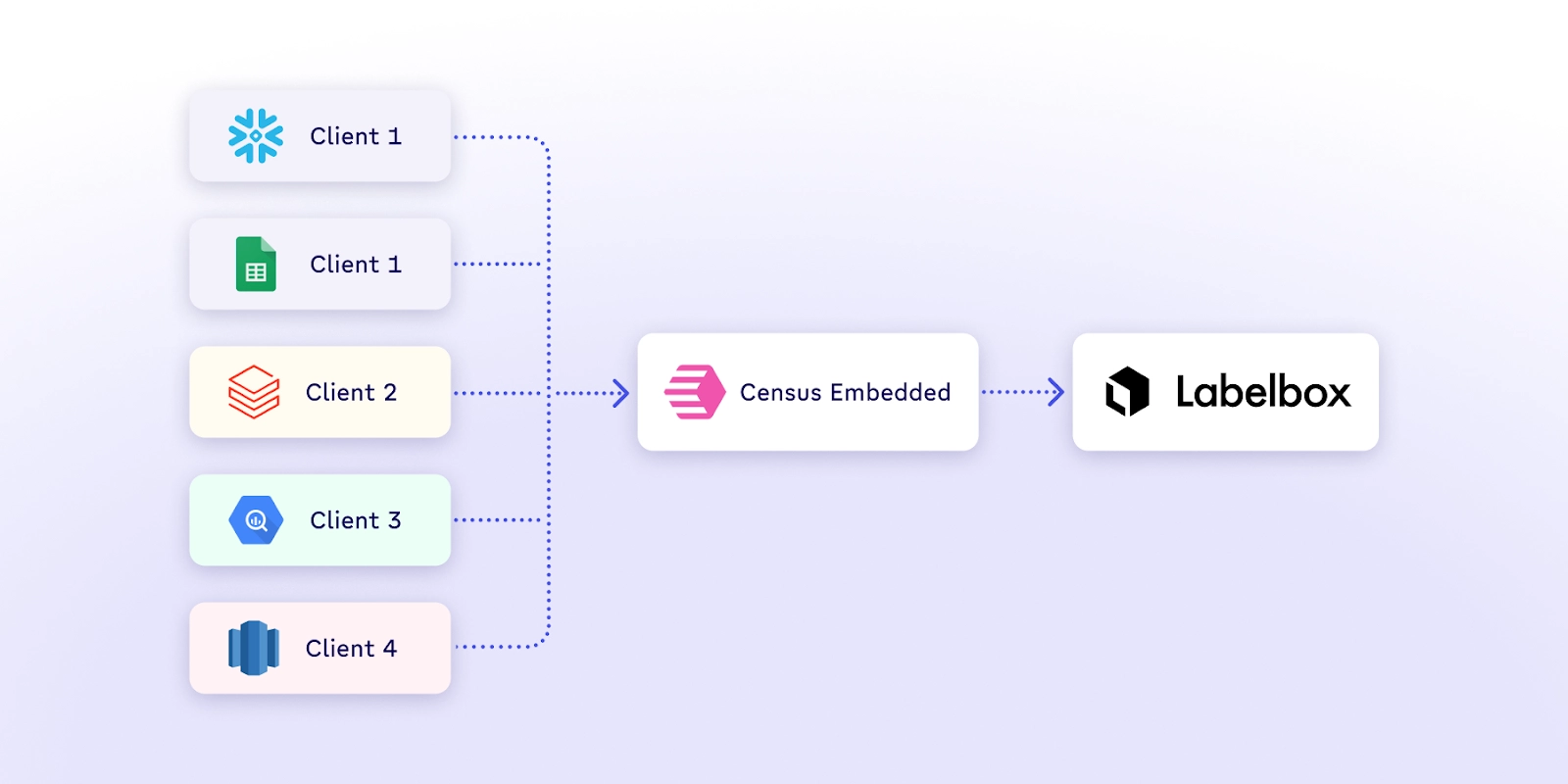Every business’s best source of truth is in their cloud data warehouse. If you’re a SaaS provider, your customer’s best data is in their cloud data warehouse, too.
That’s why Labelbox, an AI platform, implemented Census Embedded to enable rapid data onboarding from their customers’ data warehouses, all within a user-friendly and Labelbox-branded experience.
With Census Embedded, Labelbox is one of the first applications to become fully data warehouse-native. Labelbox customers can now onboard their data from their cloud data warehouse and power workflows with fresh data 24/7.
Want to learn how they helped their application speak to data warehouses? Read on.
Data Onboarding: Labelbox enriches data warehouse data
Labelbox is an AI SaaS company – sitting at the heart of machine learning development workflows at companies like Walmart, NASA, and Warner Brothers. Good, fresh data is critical for them to be the most valuable to their customers.
Specifically, Labelbox automatically tags images, text, and audio to describe the contents of the files. Data scientists use this labeled data to develop their machine-learning models. If you can imagine the bad old days, this would take teams of interns, outsourcing, and Mechanical Turk surveys. It was a slow, manual, and expensive process.
But Labelbox faces a fundamental challenge – to add value to their customers, they need access to their customer’s data. This data is often already sitting in a cloud data platform like Snowflake or Databricks, or a data lake built on GCS or S3.
Previously, customers were forced to build integrations from their data sources directly against Labelbox’s API. Labelbox wanted better for their users.
Census Embedded in Action: How it works
Labelbox uses Census Embedded to import data continuously from their customers’ data warehouses and 20+ other sources.
 |
"The benefit of this approach is that our customers can now sign up for Labelbox, rapidly onboard, connect to their warehouse, and they're done. Customers no longer have to write data pipelines into our API to get the most out of our platform." — Kahveh Saramout, Lead Data Engineer at Labelbox
The process is:
- Labelbox customers log into Labelbox, click to connect their data warehouse, and then add their credentials in a secure portal provided by Census Embedded.
- Labelbox customers select the dataset they would like to import into Labelbox and map columns from their data to available fields in Labelbox.
- Finally, customers schedule their import jobs to run on a desired cadence.
All of the necessary connections and scheduled syncs are created by the Labelbox application via the Census Embedded API. Within the Census Embedded user interface, Kahveh and his team have deep observability and alerting capabilities to manage these imports at scale.
The Future is Data Warehouse-Native
Labelbox is a pioneer in data warehouse-native applications, but they certainly won’t be the last.
At Census, we believe every SaaS company will need to integrate with the cloud data warehouse. As SaaS providers integrate AI into their platforms, access to good customer data will become the critical difference between valuable, personalized features and generic fluff.
Census Embedded is the best way to access your customer's rich datasets, whether you’re importing or exporting from your SaaS application.
Interested in learning more about becoming data warehouse-native with Census Embedded? Request a demo today and learn about how an embedded integration platform can help you onboard your customers faster and add exponential customer value.

















